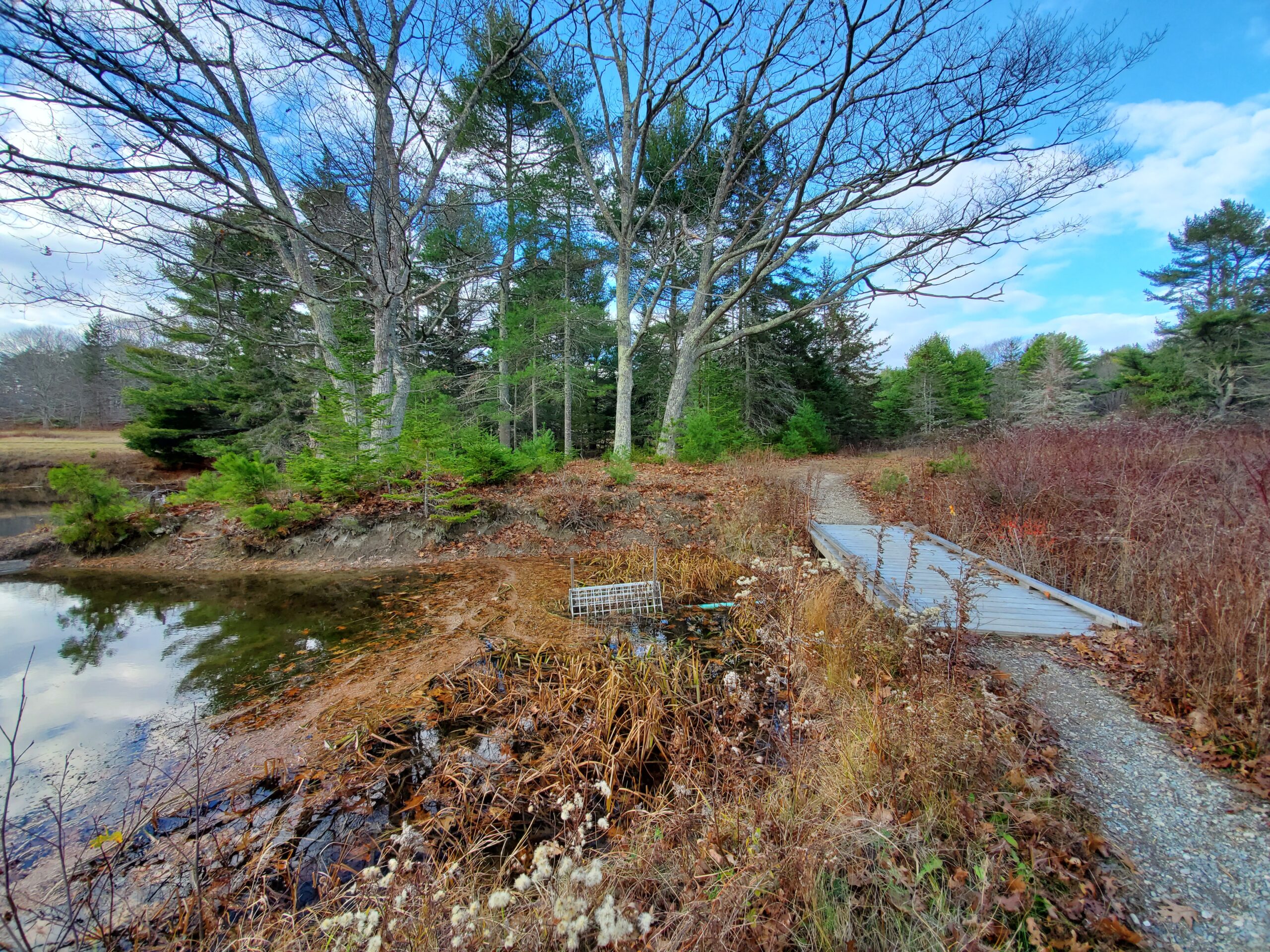December 4: A Beaver Was Here

The pond at Oak Point Farm

Beaver Chew
Our offices at the Boothbay Region Land Trust sit next to a small freshwater pond that teems with wildlife. In the warmer months the green frogs, painted turtles, and whirligig beetles are most noticeable. In the fall and spring, we see migrating waterfowl stop for a respite. For the last several years the pond was also home to a beaver or two, but they disappeared in the early spring. Perhaps they found another waterway nearby that had better food sources than they were finding near our office.
While beavers are not currently in residence at Oak Point Farm, they have left behind plenty of signs that are easy to spot when walking around the pond. The remnants of two small dams are found near the inlet and outlet streams. Beavers hear the sound of trickling water and get the urge to build a dam, weaving together branches and waterproofing it with mud. By building dams beavers can turn streams into ponds, much to the benefit of other wildlife.

Beaver Slide
Also visible around the pond are the places were beavers have taken down trees, or at least started the process of doing so. Some of the large oak trees have gouges chewed out of their bases, while all that is left of others is a sharp conical stump. Beavers take down trees for food and for constructing their dams and lodges. They are one of the only animals that can digest the cellulose, allowing them to survive on a diet of leaves, roots and bark. The beaver’s large sharp teeth are well adapted for a life of felling trees.

Beaver Lodge in Bank
An often overlooked sign of the beaver is called a slide. The pond at Oak Point Farm has several old slides up and over the embankment that connects the freshwater to the nearby saltwater. They appear as small direct trails between the two water features. Beavers use the slides to access new trees and habitat, as it is safer and easier for them to travel by water.
Perhaps the most recognized sign of a beaver is its lodge, or home. At Oak Point Farm it is a little harder to spot the beaver lodge as it is not out in the open water or shaped like a dome as most are. Instead, the home is built into a section of steep embankment along the pond, which is referred to as a bank den. Beavers build bank dens when the water is too deep or too fast moving to build a traditional lodge. Both styles of homes have an underwater entrance and space inside to sleep and eat.
So next time you find yourself out on a walk at Oak Point Farm, Lobster Cove Meadow, or another preserve with active beavers, be sure to keep an eye out for one of their many signs. You might even see a live beaver, as they are active throughout the winter, but they usually stay close to their homes. In fact, another sign you might spot just outside their lodge is a stockpile of half submerged sticks that they have planted to eat throughout the winter. They truly are fascinating creatures who have adapted to a life of water and trees.




